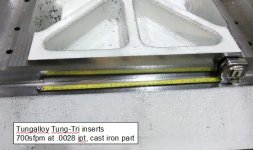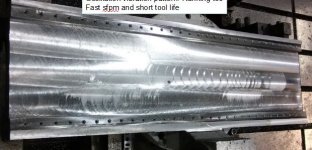Finegrain
Diamond
- Joined
- Sep 6, 2007
- Location
- Seattle, Washington
Hello,
OK, I know the standard answers on machinability and weldability, but I still have to wonder if there is not innovation happening in this space, to yield a steel that has free-machining, or at least cheap-machining, and good weldability. Specifically on the machinability, surface finish quality.
1018 -- very weldable, but gooey and harder to make good surface-finish parts
1045 -- better machinability than 1018, but less weldable?
12L14 -- not weldable
1144SP -- not weldable
What else?
Thanks, and regards.
Mike
OK, I know the standard answers on machinability and weldability, but I still have to wonder if there is not innovation happening in this space, to yield a steel that has free-machining, or at least cheap-machining, and good weldability. Specifically on the machinability, surface finish quality.
1018 -- very weldable, but gooey and harder to make good surface-finish parts
1045 -- better machinability than 1018, but less weldable?
12L14 -- not weldable
1144SP -- not weldable
What else?
Thanks, and regards.
Mike



